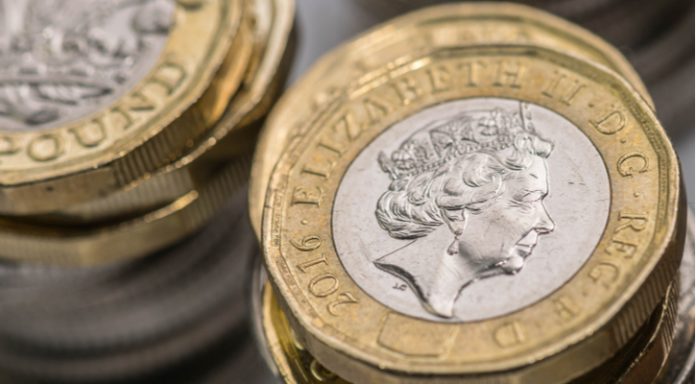The latest Brexit developments cause the pound to advance versus the US dollar on Thursday. The pound US dollar exchange rate hit a peak of US$1.3053, its highest level in almost a week before it eased slightly into the close.
| What do these figures mean? |
|---|
|
When measuring the value of a pair of currencies, one set equals 1 unit and the other shows the current equivalent. As the market moves, the amount will vary from minute to minute. For example, it could be written: 1 GBP = 1.28934 USD Here, £1 is equivalent to approximately $1.29. This specifically measures the pound’s worth against the dollar. If the US dollar amount increases in this pairing, it’s positive for the pound. Or, if you were looking at it the other way around: 1 USD = 0.77786 GBP In this example, $1 is equivalent to approximately £0.78. This measures the US dollar’s worth versus the British pound. If the sterling number gets larger, it’s good news for the dollar. |
Hopes are rising that the UK will achieve an orderly Brexit. Reports in the previous session that Ireland support UK Prime Minister Theresa May’s revised backstop plan for the Irish border, boosted the pound. The Irish border issue has threatened to derail Brexit talks. However, May’s latest revision requests that the whole of the UK remains in the EU customs union until a trade deal is agreed. This way there would be no hard border with Northern Ireland and no carving off of Northern Ireland to keep it in the EU customs union as Brussels have requested.
This is clearly a step forward for Theresa May’s plan. However, Brussels still need to agree to the plan, which so far, they have been against. EU Chief negotiator Michel Barnier has opposed the idea on the concern that the UK will continue to enjoy the EU customs and regulatory benefits without and of the member obligations. So, whilst the EU have yet to agree to the plan, investors cheered the half step forward to an orderly, soft, Brexit.
| Why is a “soft” Brexit better for sterling than a “hard” Brexit? |
|---|
| A soft Brexit implies anything less than UK’s complete withdrawal from the EU. For example, it could mean the UK retains some form of membership to the European Union single market in exchange for some free movement of people, i.e. immigration. This is considered more positive than a “hard” Brexit, which is a full severance from the EU. The reason “soft” is considered more pound-friendly is because the economic impact would be lower. If there is less negative impact on the economy, foreign investors will continue to invest in the UK. As investment requires local currency, this increased demand for the pound then boosts its value. |
Today there is no high impacting UK economic data. Investors will continue to watch Brexit developments to drive the price of the pound.
Data Continues To Boost The Dollar
The dollar has had an impressive rally through most of the week and was trading broadly higher again on Thursday, albeit lower versus the pound. Another round of impressive data from the US including strong jobless claims continue to boost optimism over the outlook of the US economy.
Today investors will turn their full attention to US non-farm payrolls. Analysts are expecting the US jobs data to show that 184,000 jobs were created in September. This is down slightly from 201,000 that were created in August. After Wednesday’s ADP private payroll data beat analyst expectations there is a possibility that today’s data could also come in strong. Should this be the case, it would support a faster pace of interest rate hikes by the Fed and therefore lift the dollar.
| How does the non-farm payroll (NFP) affect the US dollar? |
|---|
| It works like this, when there is low unemployment and high job creation, the demand for workers increases. As demand for workers goes up, wages for those workers also go up. Which means the workers are now taking home more money to spend on cars, houses or in the shops. As a result, demand for goods and services also increase, pushing the prices of the good and services higher. That’s also known as inflation. When inflation moves higher, central banks are more likely to raise interest rates, which then pushes up the currency’s worth. |
This publication is provided for general information purposes only and is not intended to cover every aspect of the topics with which it deals. It is not intended to amount to advice on which you should rely. You must obtain professional or specialist advice before taking, or refraining from, any action on the basis of the content in this publication. The information in this publication does not constitute legal, tax or other professional advice from TransferWise Inc., Currency Live or its affiliates. Prior results do not guarantee a similar outcome. We make no representations, warranties or guarantees, whether express or implied, that the content in the publication is accurate, complete or up to date. Consult our risk warning page for more details.
This article was initially published on TransferWise.com from the same author. The content at Currency Live is the sole opinion of the authors and in no way reflects the views of TransferWise Inc.





